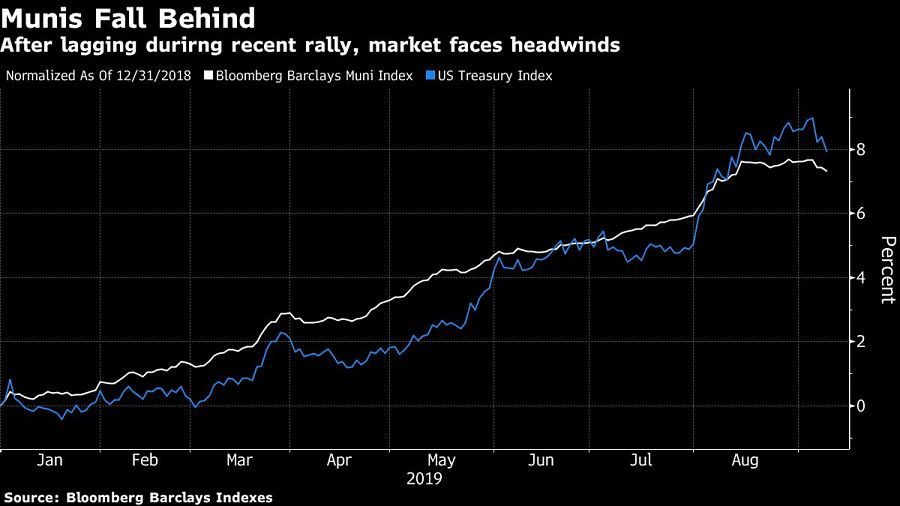The municipal-bond market’s best days for 2019 are probably behind it.
A surprise boost in state and local government debt sales this month, low interest rates and investors’ desire to lock in the market’s biggest returns since 2014 suggest that tax-exempt bonds may lag Treasuries for the remainder of the year, according to Barclays strategists led by Mikhail Foux.
With interest rates not far from a more than half century low, states and cities are seizing on the moment to borrow, creating headwinds for a market that had benefited from a slowdown in new debt sales since late 2017. States and local governments have sold $19 billion of fixed-rate bonds so far this month and plan to issue another $17 billion over the next 30 days, according to data compiled by Bloomberg.
Advertisement
That’s promising to make September a busier-than-usual month. Sales also tend to pick up in October.
“There’s a chance that supply will be really, really, heavy to make up for the light first half of the year. Rates are still low so people aren’t dying to invest,” Mr. Foux said in an interview. “All those technicals that were so great and supported the market, they might not be as supportive going forward.”

State and local government bonds have returned 7.3% this year, the best showing in five years, though they have lagged Treasuries during the recent rally.
Demand for municipal debt has been spurred in part by the new federal limit on local tax deductions, while fears of slowing economic growth led investors to pour cash into the market for 35 straight weeks. Continuing trade tensions with China and a global slowing of manufacturing will likely keep rates low, making it harder for munis to outperform, Mr. Foux said.
Citigroup municipal strategists forecast that $24 billion bonds will mature or be paid off early in September, when investors will receive another $8.6 billion of coupon payments. But that’s unlikely to provide enough money to buy all the newly issued securities, requiring investors to keep pouring new cash into the market.
“Who wants to be aggressive at current rates?” Mr. Foux said. “People want to be defensive for the last three to four months of the year”



